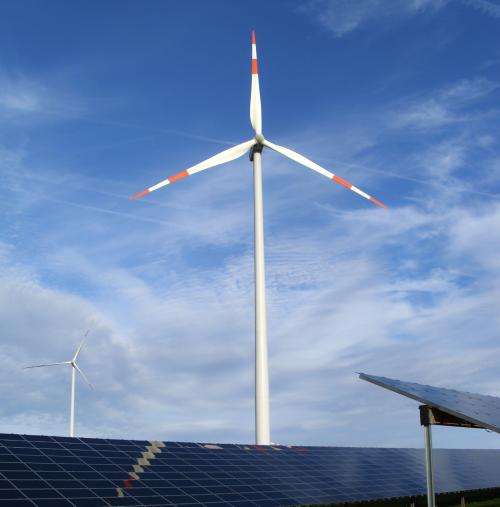Open software platform to bring down energy costs

Energy is getting more and more expensive, and experts are predicting record electricity and heating prices. A software platform promises to lighten the load for households and businesses by making it easier for consumers to put renewables to good effect.
For years now, electricity and heating bills have constantly been on the rise, and 2013 is no different – prices are shooting up. Germans are keen to do something about it. A survey conducted by inspection company Dekra revealed that one in two people is turning down the central heating, while the great majority are cutting back on cooking and laundry and actively looking to reduce consumption. This is where a new software platform comes in: it makes it easier to find a smart approach to energy issues, not only for homeowners and tenants but also for business and industry, and helps to bring down costs. Connecting energy users and producers with the control centers of grid companies and energy suppliers, this free Java-based framework for energy management is called OGEMA (Open Gateway Energy Management Alliance). The name is shared by the OGEMA 2.0 project, in which – with funding to the tune of five million euros from Germany's Federal Ministry for the Environment, Nature Conservation and Nuclear Safety (BMU) – the Fraunhofer Institutes for Wind Energy and Energy System Technology IWES in Kassel, for Solar Energy Systems ISE in Freiburg, and for Integrated Circuits IIS in Erlangen are taking the solution to the next level.
"Our system lets customers track future variable electricity prices and allows them to fit their consumption to the energy on offer. This ability is becoming increasingly important with the switch to renewables," says Dr. -Ing. David Nestle, Head of department 'Energy Management' at IWES, who describes the software platform as "basically an interface between the 'smart grid' and the 'smart building'." OGEMA apps receive variable electricity tariffs and automatically calculate the optimum times to run connected devices such as a refrigerator, freezer or washing machine. This allows consumers to turn on, say, their dishwasher at the most economical times – especially when there is an oversupply of wind energy. Air-conditioning units, radiator thermostats, heat pumps and photovoltaic facilities can also be operated automatically by the apps. There are, for instance, applications running on OGEMA that let consumers know whether they would be better off using the electricity generated by their PV facility themselves or putting it on the grid. This information is presented to customers on a display. Other apps, meanwhile, turn off the heating in office buildings when rooms are not being used – say at the weekend, or when employees are out on the road. Another good use for OGEMA in a business context is for flexible control of combined heat and power plants to increase their profitability. As an example, reducing heat output for a short time to below predicted demand would avoid some electricity generation; this could be offered to the market as negative balancing power, giving rise to additional revenues.
Open system for the home and building automation field
The apps cover a broad spectrum of different tasks; since OGEMA is an open system, all developers and producers are free to turn their ideas for using energy more efficiently into software for the platform. "Our framework is comparable with other open-source projects such as Android. That's what marks it out from the rest: within home and building automation, all the existing systems are proprietary," says Nestle. The OGEMA Alliance and an industry working group were formed with the aim of driving the development of software and the transfer of the research results into the market. Participants in the working group receive regular updates on the project's progress and learn how they can program applications for the platform. OGEMA 1.0 can already be downloaded free (www.ogema-alliance.org). Now Fraunhofer researchers are working on OGEMA 2.0, the finalized version of which is set to be made available in mid-2013. Among other things, it will feature new security functions and improved programming interfaces, while also making it easier to install apps in future.
Implementing OGEMA is inexpensive for users, with minimal hardware requirements. The platform runs on what is known as an embedded PC & web server, which can be purchased for around 30 euros, and which can be accessed via smartphone, PC, tablet or laptop. In initial field studies, the energy management system has been a success. One example is the Model City Mannheim project, a winner of the E-Energy Technology Competition organized by Germany's Federal Ministry of Economics and Technology: here, the system was tested in around 500 homes and families gave it very high marks in their concluding survey. At Hannover Messe 2013 from April 8 to 12, researchers from the IWES, the ISE and the IIS will be presenting OGEMA 2.0 and running a demonstration using a simulated environment to show how consumers can benefit from the system and bring down their energy costs (Hall 13, Booth C10).
Provided by Fraunhofer-Gesellschaft



















